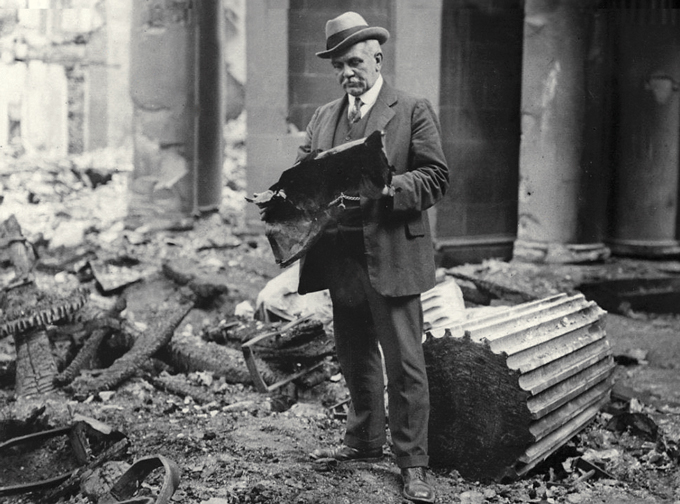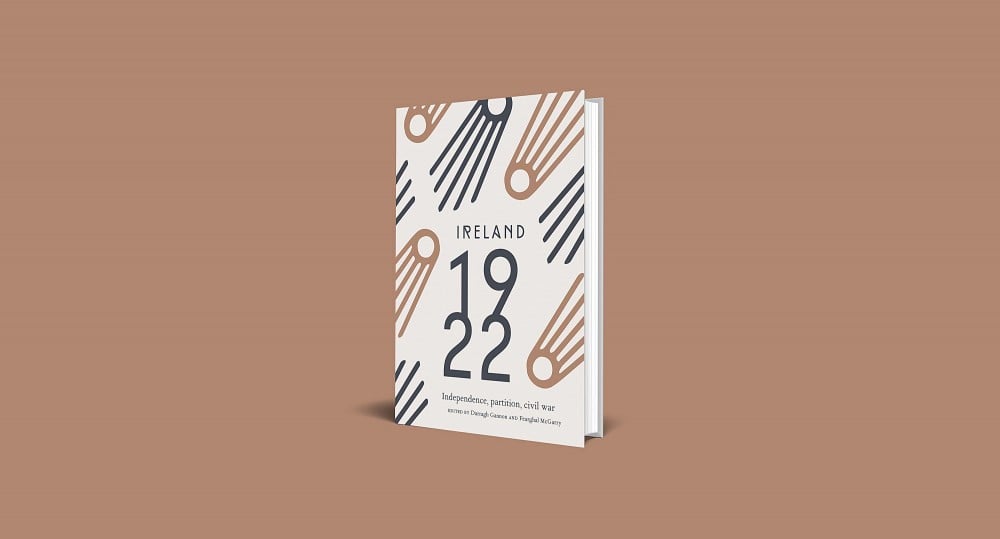Epilogue: Forgetting 1922
By Guy Beiner
1922 is a worthy candidate for the most undeservedly forgotten year in contemporary Irish history. Yet, it is a strange forgetting: while key events that occurred that year have not entirely slipped out of memory, they have been eclipsed by other dates and therefore do not receive the recognition they deserve.
Ireland stands out among modern nation-states for not having a designated anniversary of its founding. Saint Patrick’s Day, which in its modern form is a celebration of Irish peoplehood, does not fulfil that function (hence, on that day, leading statesmen typically go abroad on diplomatic missions to locations with substantial diaspora communities). Easter Monday, as a national holiday commemorating the failed Easter Rising, can at best mark a milestone on the path towards sovereignty. For good reason, the centennial of the Irish revolution has been memorialised through a ‘Decade of Centenaries’, circumventing the problem of settling on a single commemorative date, which would undoubtedly be disputed. Significantly, the various proposals occasionally floated for a designated independence celebration tellingly elide relevant dates in 1922. More generally, the year does not feature in the list of iconic dates of nationalist history (1798, 1848, 1867, 1916 and all that). It has also been left outside of the canon of unionist history (1641, 1689–90, 1912, 1916 and all that), even though it was the year in which Northern Ireland consummated its separation from the ‘South’ in favour of retaining a place in the United Kingdom. In effect, 1922 has been relegated to a forgetful remembrance, whereby memory is obscured and tinged with ambivalence.
Historical oblivion is multi-layered and, when examined closely, a hierarchy of disremembering can be discerned. The founding of Saorstát Éireann, the Irish Free State, was contested from the outset by the opponents of the Anglo-Irish Treaty who sought to tarnish, if not efface, its memory. At the inaugural banquet of the (largely forgotten) Irish Race Congress held in Paris in late January 1922, Éamon de Valera provocatively proposed a toast to the Irish Republic, much to the chagrin of the pro-Treaty delegates. Indeed, in popular historical consciousness, de Valera (who was in opposition till 1932) is often erroneously remembered as the founding figure of independent Ireland, dismissively glossing over the decade of governments headed by W.T. Cosgrave and Cumann na nGaedheal, a party that was de facto formed at the end of 1922.
Remembrance of the civil war—with its fratricidal intra-community vehemence and hidden history of violence against women—was largely overshadowed by a glorified memory of the War of Independence. The state-choreographed funeral of Arthur Griffith (16 August 1922), who has been dubbed by Anne Dolan ‘The Forgotten President’, was outshone within a fortnight by the outpouring of mass grief at the funeral of Michael Collins (28 August 1922). But even this memorable event was shrouded in the discomfiting controversies of the civil war. A poorly constructed Cenotaph in memory of Griffith and Collins erected in 1923 soon fell into disrepair, to be dismantled in 1939; its replacement with a permanent monument in 1950 passed without notice.¹ The new state encountered difficulties in promoting memorialisation of its troubled foundation and, as demonstrated by David Fitzpatrick, its stifled attempts at commemoration amounted to a ‘chronicle of embarrassment’.²
Likewise, the new autonomous statelet of Northern Ireland showed little interest in remembering 1922, which was marred by a sharp exacerbation of the sectarian violence associated with the so-called ‘Belfast Pogrom’, including such atrocities as the McMahon killings on 24 March. Wary of antagonising the Catholic nationalist minority and aware of having forsaken their fellow unionists outside of the six north-eastern counties, northern unionists refrained from marking the confirmation of partition that fol- lowed the formal establishment of the Irish Free State on 6 December 1922.
The dynamics of remembering and forgetting pertaining to 1922 are epitomised in the symbolism of the partial destruction of the Four Courts at the beginning of the civil war, on 30 June. Asked on the day for his response to the news of the loss of the thousands of manuscripts stored in the Treasury Records building of the Four Courts complex, Secretary of State for the Colonies Winston Churchill pragmatically quipped that ‘a state without archives is better than archives without a state’.³ The burning of the Public Record Office has been controversially decried by Tom Garvin as a deliberate ‘attempt to murder the nation as a collective entity with a collective memory’.⁴ Yet, it would seem that the damage to the archives was incidental rather than intended.⁵
Paradoxically, remembrance—and even forgetting—of an event can begin prior to its occurrence. There was a ‘prememory’ to the takeover of the Four Courts, in the sense that the anti-Treaty republican forces that occupied the buildings just before Easter 1922 were probably hoping to reenact the spectacular takeover of the General Post Office in Easter 1916. Yet, this imitative choice of tactics was inevitably subject to ‘pre-forgetting’, as the episode was destined to remain in the shadow of the towering memory of the GPO, which was elevated into a national myth.⁶ The demolition of much of the grand eighteenth-century building complex on Inns Quay was akin to the destruction of ‘Big houses’, which had commenced throughout Ireland during the War of Independence, reaching new heights in the civil war, and is another of the largely forgotten features of 1922.⁷ As such, it was an act of post-colonial decommemorating that presaged the destruction of Ascendancy and imperial monuments in the following years (culminating in the blowing up of Nelson’s Pillar in 1966, during the jubilee anniversary of the Easter Rising). Iconoclastic vandalism is generally regarded as an act of oblivion, but it leaves a glaring absence in the landscape that can trigger recuperative initiatives of re-commemorating.⁸
‘[T]he great gap which the fire has made’, was labelled by The Irish Times ‘a memorial of destruction’. If monuments are designed to preserve memory, the haunting image of the burnt archive acquired an added symbolic resonance, inadvertently becoming a counter-monument, signifying the lamentable obliteration of historical memory. A contemporary letter to the editor expressed the yearning for restoration: ‘one may hope that the destruction of the Public Record Office and the Four Courts may not prove a holocaust and that some of the records may be salvaged’.⁹ This trope of a ‘holocaust’ (in its original Greek sense of a sacrifice by fire) would be repeated in subsequent years when people lamented the loss of archival records and expressed a hope that copies could be found.¹⁰ The aspiration to recover lost memory would ultimately be partially fulfilled a century later with the Beyond 2022 project, a cutting-edge collaboration of the National Archives of Ireland and the UK, the Public Record Office in Northern Ireland, the Irish Manuscripts Commission and Trinity College Dublin, together with numerous other participating institutions, to create a digitalised virtual reproduction of the lost archives.¹¹ This is a powerful demonstration of how restored memory can counter the forgetting of 1922.
Extracted from Ireland 1922 edited by Darragh Gannon and Fearghal McGarry and published by the Royal Irish Academy with support from the Department of Tourism, Culture, Arts, Gaeltacht, Sport and Media under the Decade of Centenaries 2012-2023 programme. Click here to view more articles in this series, or click the image below to visit the RIA website for more information.






















